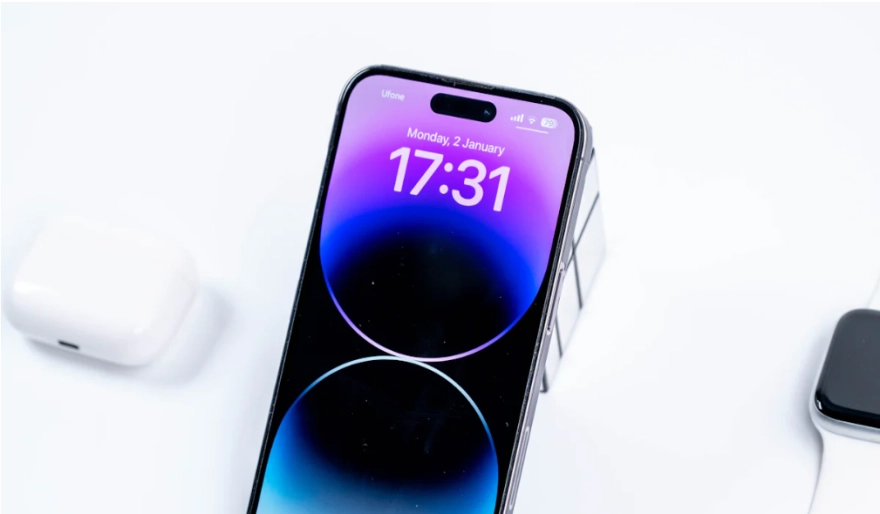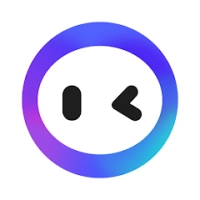iOS vs. Android in 2025
1 hour read iOS has stuck to its roots with a strong focus on security and privacy. Apple’s updates ensure your data stays safe, and you get a consistent experience across all devices. Android, on the other hand, has worked hard to improve its security updates.written by Alex Carter, Content Creator February 28, 2024 08:10
Image Source: pexels
The debate over which operating system reigns supreme—iOS vs. Android—continues to heat up in 2025. Android dominates the global market with a staggering 71% share, while iOS holds a solid 28-29%. Why? Android’s affordability makes it a favorite in emerging markets, while iOS thrives in wealthier regions like North America and Japan. You’ll notice iOS users often stick with Apple, drawn by its premium features and ecosystem. On the other hand, Android’s flexibility appeals to a broader audience. So, which one fits your needs better? Let’s dive in and find out.
Key Takeaways
- Android is used by 71% of people because it is cheap and flexible. This makes it popular in growing countries.
- iOS is great for safety and works well with other Apple devices. It gives a smooth experience for Apple users.
- Android lets you change your device a lot to fit your style. iOS has fewer choices but they are high quality.
- Both have better batteries now. Android charges faster, but iOS saves power smartly.
- To pick iOS or Android, think about what you need: privacy and Apple product connection or freedom and choices with Android.
Key Differences Between iOS and Android in 2025
Evolution of iOS and Android
Over the past five years, both iOS and Android have pushed boundaries to stay ahead in the game. You’ve probably noticed how augmented reality (AR) has become a big deal. Both platforms now offer AR features that make gaming and shopping more immersive. Digital assistants like Siri and Google Assistant have also leveled up, helping you manage your day with smarter suggestions and better voice recognition.
iOS has stuck to its roots with a strong focus on security and privacy. Apple’s updates ensure your data stays safe, and you get a consistent experience across all devices. Android, on the other hand, has worked hard to improve its security updates. While it’s still an open platform, manufacturers are now rolling out updates faster than ever before.
The design philosophies of these two systems couldn’t be more different. iOS gives you a uniform look and feel, no matter which Apple device you use. Android, however, embraces diversity. Each manufacturer adds its own twist, giving you plenty of options to choose from. This competition has driven innovation, from better cameras to smoother gesture-based navigation.
Closed vs. Open Ecosystems
When it comes to ecosystems, the choice between iOS and Android depends on what you value more: simplicity or flexibility. Apple’s ecosystem is like a well-oiled machine. If you own an iPhone, iPad, or Mac, you’ll love how seamlessly they work together. Features like AirDrop and Handoff make switching between devices effortless. But there’s a catch—it’s exclusive. You need to stick to Apple products to enjoy this level of integration.
Android takes a different approach. Its open ecosystem lets you mix and match devices from different brands. You can pair your Android phone with a Windows laptop or a smartwatch from another company. This flexibility is great if you like variety, but it can feel a bit fragmented. You might need to put in extra effort to get everything to work smoothly.
In the end, the choice between iOS vs. Android comes down to your priorities. Do you prefer a polished, closed system or the freedom to customize your tech setup?
Hardware Comparison

Image Source: pexels
Design and Build Quality
Build quality varies across Android devices. High-end models like the Samsung Galaxy S series rival iPhones in craftsmanship. However, budget Android phones may not feel as refined. If you value a consistent, high-end design, iOS might win you over. But if you love variety and innovation, Android has plenty to offer.
Performance and Specifications
Performance is where things get interesting. Apple’s iOS 18 is optimized to work seamlessly across all its devices. This means you get smooth performance, no matter which iPhone you use. Android 14, however, depends on the hardware of the device. High-end Android phones deliver incredible speed and multitasking, but mid-range and budget models might lag behind.
Here’s a quick comparison of key features in 2025:
If you’re a power user, Android’s customization and hardware options might appeal to you. But if you prefer a consistent and reliable experience, iOS is hard to beat.
Battery Life and Charging Technologies
Battery life has seen massive improvements in 2025. Both iOS and Android devices now use hybrid electrolyte systems, combining liquid and solid-state electrolytes for better stability and energy density. You’ll also find graphene-enhanced lithium-ion batteries, which charge faster and last longer. AI battery management is another game-changer. It adjusts settings in real-time to save power, so your phone lasts longer throughout the day.
Android devices often lead the way in charging technologies. Some models now feature quantum dot batteries, capable of charging in just 30 seconds. Meanwhile, Apple has introduced smart charging, which adapts to your schedule and uses off-peak energy. Both ecosystems are exploring bio-inspired energy storage, like plant cellulose, to improve efficiency and reduce waste.
If fast charging is your priority, Android offers more options. But if you want a phone that intelligently manages power, iOS might be the better choice. Either way, you’ll benefit from the latest advancements in battery tech. 🔋
Software and User Experience
Interface and Usability
When you compare the interfaces of iOS and Android in 2025, the differences are clear. iOS sticks to its polished, minimalist design. It’s clean, consistent, and easy to navigate. Android, on the other hand, gives you more freedom. Its AI-driven Smart Interface adapts to your habits, making it highly customizable. If you love tweaking your phone’s look and feel, Android is the way to go.
Here’s a quick breakdown of how they stack up:
If you prefer simplicity and consistency, iOS might feel like home. But if you enjoy personalizing your experience, Android offers endless possibilities.
Software Updates and Longevity
Software updates are a big deal when choosing between iOS and Android. Apple takes the lead here. Updates are directly managed by Apple, so you get them regularly and on time. Android updates, however, depend on the manufacturer. Some brands are quick, but others lag behind.
If you want a phone that stays updated and secure for years, iOS is the better choice. Android’s longevity depends on the brand you pick, so choose wisely.
Exclusive Features in 2025
Both platforms have introduced exciting features in 2025. iOS 19 focuses on personalization and privacy. Features like AI-Driven Personalization and Focus Mode 2.0 make your phone smarter and more intuitive. Privacy Relay ensures your data stays safe. Android 14, however, shines in customization and accessibility. Material You offers advanced options to tweak your phone’s look, while real-time audio-to-text transcription improves accessibility.
| 2. Focus Mode 2.0 (Dynamic Adaptation, Expanded Integration)
| 3. Advanced Privacy Features (Privacy Relay) |
| Android 14| 1. Privacy Controls (Granular app permissions, Encrypted Cloud Backups)
| 2. Material You (Advanced customization options, Interactive widgets)
| 3. Accessibility Enhancements (Improved voice control, Real-time audio-to-text transcription) |
Whether you value privacy or customization, both platforms have something unique to offer. It all comes down to what you need most in your daily life.
Customization and Personalization
iOS: Limited but Polished Options
If you’re someone who values simplicity and elegance, iOS might feel like the perfect fit. Apple has always focused on delivering a polished experience, and that hasn’t changed in 2025. You can customize your home screen with widgets and rearrange app icons, but the options stop there. Unlike Android, iOS doesn’t let you dive deep into personalization. You’re limited to pre-designed themes and layouts that Apple carefully curates.
This approach has its perks. The design feels consistent and refined, no matter how you set up your phone. You won’t have to worry about clashing styles or overwhelming options. However, if you’re someone who loves tweaking every detail, you might find iOS a bit restrictive. It’s like having a beautifully decorated room where you can only move the furniture around but can’t change the wallpaper.
Android: Endless Customization Possibilities
Android, on the other hand, is a playground for customization enthusiasts. In 2025, it offers more ways than ever to make your phone truly yours. You can change your lock screen with unique wallpapers, widgets, and clock styles. Want quick access to your favorite apps? Android lets you set up specialized widgets and notifications that match your workflow.
The home screen is where Android really shines. You can adjust layouts, use custom icon packs, and even install alternative launchers to completely transform the look and feel of your device. AI features take it a step further by suggesting app placements based on your habits, making your phone smarter and more intuitive.
This level of freedom makes Android ideal if you love experimenting with your device. Whether you want a minimalist setup or a vibrant, colorful interface, Android gives you the tools to create it. It’s the ultimate choice for anyone who wants their phone to reflect their personality.
In the ongoing debate of iOS vs. Android, customization is one area where Android clearly takes the lead.
App Ecosystem and Compatibility
App Availability and Quality
When it comes to apps, both iOS and Android have their strengths. You’ll find that iOS often gets new apps and features first. Developers prioritize iOS because users tend to spend more on apps, making it a lucrative platform. This focus means apps on iOS are usually better optimized, with fewer bugs and smoother performance.
Android, however, offers a much larger pool of apps. The Google Play Store boasts around 2.26 million apps, compared to 1.81 million on the Apple App Store. You also get the freedom to sideload apps or explore third-party options, which isn’t possible on iOS. This flexibility makes Android a great choice if you want access to niche or experimental apps.
Here’s a quick comparison:
If you value quality and security, iOS might be your go-to. But if you love variety and affordability, Android has you covered.
Cross-Platform Compatibility
Cross-platform compatibility has come a long way in 2025. Developers now use advanced tools to create apps that work seamlessly on both iOS and Android. This approach saves time, reduces costs, and ensures a broader reach. You’ll notice that many popular apps now offer a consistent experience, no matter which platform you use.
However, challenges still exist. Android’s wide range of hardware specifications can make optimization tricky. Ensuring smooth performance across budget and flagship devices takes extra effort. On the other hand, iOS benefits from its uniform hardware, making it easier to deliver a consistent user experience.
For you, this means most apps will work well on both platforms. But if you’re using a budget Android phone, you might encounter occasional hiccups. Developers are working hard to bridge these gaps, so the future looks promising for cross-platform apps.
Privacy and Security
iOS: Apple's Focus on Privacy
When it comes to privacy, Apple doesn’t mess around. In 2025, iOS continues to lead the charge with its strong focus on keeping your data safe. Apple’s philosophy is simple: your information belongs to you, not advertisers or third parties. That’s why features like App Tracking Transparency (ATT) are still a big deal. With ATT, you get to decide which apps can track your activity. No sneaky data collection happening behind your back.
Apple also introduced Privacy Relay, a tool that hides your IP address and browsing activity from websites. Think of it as a digital cloak that keeps your online habits private. Plus, iOS encrypts your messages, photos, and even health data. This means only you—and the people you choose—can access them.
Tip: If you’re someone who values privacy above all else, iOS might feel like the safer bet.
Apple’s closed ecosystem plays a big role here. Since Apple controls both the hardware and software, it’s easier for them to enforce strict security measures. Sure, this limits your customization options, but it also means fewer vulnerabilities for hackers to exploit.
Android: Balancing Security with Flexibility
Android takes a different approach. It balances security with the freedom to customize your experience. In 2025, Google has stepped up its game with encrypted cloud backups and granular app permissions. You can now control exactly what each app can access—whether it’s your location, camera, or microphone.
Android’s Play Protect scans apps for malware before you download them. It’s like having a digital bodyguard for your phone. And if you’re worried about updates, many manufacturers now promise three to five years of security patches. That’s a big improvement from the past.
Note: Android’s open ecosystem gives you more choices, but it also means you need to stay vigilant.
One standout feature is Android’s sandboxing technology, which isolates apps to prevent them from accessing sensitive data. This adds an extra layer of protection. However, the open nature of Android means it’s still more vulnerable to threats compared to iOS.
In the end, Android offers flexibility, but you’ll need to take an active role in managing your security. If you’re tech-savvy and love customization, this trade-off might be worth it.
AI Features and Smart Capabilities

Image Source: pexels
Virtual Assistants: Siri vs. Google Assistant
In 2025, Siri and Google Assistant have become smarter than ever, thanks to advancements in natural language processing and machine learning. Siri, deeply integrated into Apple’s ecosystem, feels like a personal concierge for your digital life. It doesn’t just answer questions—it predicts your needs. For example, Siri might suggest turning on Focus Mode during your usual study hours or remind you to leave for an appointment based on traffic conditions. This tight integration makes Siri a key part of Apple’s premium experience.
Google Assistant, on the other hand, shines with its versatility. It works across a wide range of devices and services, from Android phones to smart home gadgets. Imagine booking an Uber or controlling your thermostat—all with a simple voice command. Google’s expertise in search and data processing gives its assistant an edge in understanding complex queries. If you’re someone who values flexibility and cross-platform compatibility, Google Assistant might feel like the better fit.
Both assistants have improved their conversational skills, making interactions feel more natural. Whether you’re asking Siri to play your favorite playlist or using Google Assistant to translate a phrase in real time, these AI tools are more intuitive than ever.
AI-Powered Features in 2025
AI has transformed how you interact with your phone. Both iOS and Android now offer unique features that make your device smarter and more helpful. Here’s a quick comparison of what each platform brings to the table:
| Advanced Privacy Features | Privacy Relay | Granular control over app permissions | | | N/A | Encrypted Cloud Backups | | Material You | N/A | Advanced customization options | | Accessibility Enhancements | N/A | Improved voice control, Advanced translation |
Apple’s iOS 19 introduces Apple Intelligence, which includes tools like Genmoji for creating personalized avatars and Image Playground for editing photos with AI. Meanwhile, Android’s Gemini AI focuses on understanding context better, while Galaxy AI offers live translations and advanced photo editing. These features show how both platforms are pushing the boundaries of what AI can do for you.
If you’re looking for a phone that adapts to your habits and makes life easier, these AI-powered features are worth exploring. Whether you prefer Siri’s seamless integration or Google Assistant’s flexibility, 2025 is all about smarter, more intuitive devices.
Integration with Other Devices
Apple Ecosystem: Seamless but Exclusive
If you’re someone who loves when your devices just work together, the Apple ecosystem might feel like magic. Apple has mastered the art of seamless integration, making it easy for you to switch between your iPhone, iPad, Mac, and even your Apple Watch. Here’s how Apple keeps everything connected in 2025:
- iCloud acts as the central hub, syncing your photos, files, and even app data across all your devices.
- Continuity lets you start a task on one device and pick it up on another without missing a beat.
- Handoff makes switching between devices effortless. For example, you can start writing an email on your iPhone and finish it on your Mac.
- Universal Clipboard allows you to copy text or images on one device and paste them on another.
- AirDrop makes sharing files between Apple devices quick and wireless.
- Apple Pay works across devices, letting you make secure payments with just a tap.
This level of integration feels smooth and intuitive, but there’s a catch. You need to stick to Apple products to enjoy these benefits. If you’re using a Windows PC or an Android tablet, you’ll miss out on these features. Apple’s ecosystem is like an exclusive club—it’s amazing if you’re all in, but it doesn’t play well with others.
Android Ecosystem: Diverse but Fragmented
The Android ecosystem takes a different approach. It’s all about giving you options. Whether you’re pairing your phone with a smartwatch, a gaming console, or a smart TV, Android offers a wide range of choices. Here’s a quick look at the advantages:
This diversity is great if you like mixing and matching devices. You can pair your Android phone with a Windows laptop or a smartwatch from another brand. However, this flexibility comes with a downside. The experience can feel fragmented. Unlike Apple, Android doesn’t have a single company controlling everything. You might need to put in extra effort to get your devices to work together smoothly.
So, if you value variety and customization, Android’s ecosystem is perfect for you. But if you prefer a polished, unified experience, Apple might be the better choice.
Pricing and Value for Money
iOS: Premium Pricing for Premium Experience
When you think of iOS devices, the first thing that might come to mind is their premium price tag. Apple has built its reputation on offering high-quality products, and that’s reflected in the cost. In 2025, iPhones continue to stand out for their sleek design, durable materials, and cutting-edge technology. But what exactly makes them so expensive? Let’s break it down:
Apple’s focus on privacy and long-term software updates also adds value. You’re not just buying a phone; you’re investing in a device that will stay secure and functional for years. Plus, if you already own other Apple products, the seamless integration makes the experience even more worthwhile. Sure, the price might seem steep, but for many, the premium experience is worth every penny.
Android: Options for Every Budget
If you’re looking for variety and affordability, Android has you covered. In 2025, Android devices cater to every budget, from high-end flagships to budget-friendly models. Whether you want the latest tech or just a reliable phone, there’s an Android device for you. Here’s a quick look at what’s available:
Android’s flexibility shines here. You can find a phone that fits your needs without breaking the bank. Mid-range options like Xiaomi and Realme offer impressive features at a fraction of the cost of an iPhone. Even budget models provide solid performance for everyday tasks. If you’re after value for money, Android gives you more choices than any other platform.
So, when it comes to pricing, the iOS vs. Android debate boils down to what you prioritize. Do you want a premium experience with unmatched integration, or do you prefer a device that fits your budget and still delivers great features?
Future Trends Shaping iOS and Android
Gaming: Mobile Gaming and Cloud Gaming Advancements
Mobile gaming is evolving rapidly, and you’re in for a treat in 2025. Cloud gaming is changing the way you play. You no longer need expensive hardware to enjoy high-quality games. Services like Xbox Cloud Gaming and NVIDIA GeForce Now let you stream resource-heavy titles directly to your phone. All you need is a stable internet connection. With 5G networks becoming more widespread, you can expect low-latency gaming that feels smooth and responsive.
AR and VR are also making waves in mobile gaming. Imagine playing a game where your living room transforms into a battlefield or a treasure hunt unfolds in your backyard. Both iOS and Android are integrating these technologies to create immersive experiences. Whether you’re using Apple’s ARKit or Android’s ARCore, the possibilities are endless.
VR/AR: Immersive Experiences on Mobile
Virtual and augmented reality are no longer just buzzwords. They’re shaping how you interact with your devices. In 2025, both iOS and Android are pushing the boundaries of AR and VR. Apple’s ARKit and Android’s ARCore make it easier for developers to create apps that feel real and engaging. Android’s ARCore, for instance, supports over 2.5 billion devices, giving developers a massive audience to target.
Cross-platform tools like Unity are also stepping up. They allow developers to build apps that work seamlessly on both platforms. This means you get access to the same amazing AR experiences, whether you’re using an iPhone or an Android device. Cloud-based solutions like echo3D are helping manage complex AR applications, making them more efficient and accessible.
AI Advancements: Smarter and More Intuitive Devices
AI is making your phone smarter than ever. On iOS, features like AI-driven personalization predict what you need before you even ask. For example, your phone might suggest apps based on your daily habits or adjust Focus Mode automatically when you’re at work. Android isn’t far behind. Its Material You feature lets you customize your phone’s look while AI adapts widgets and themes to match your preferences.
Accessibility is another area where AI shines. Android now offers real-time audio-to-text transcription, making devices more inclusive. Privacy is also a priority. Both platforms use AI to enhance security, with iOS offering Privacy Relay and Android providing encrypted cloud backups. These advancements make the iOS vs. Android debate even more exciting, as both platforms continue to innovate and improve your experience.
Choosing between iOS and Android in 2025 depends on what matters most to you. iOS excels in delivering a polished, secure, and tightly integrated experience. Its strengths include superior software updates, robust privacy measures, and seamless compatibility with Apple devices. However, it limits customization and locks you into its ecosystem. On the other hand, Android offers unmatched flexibility, a wide range of devices, and extensive customization options. But its fragmented ecosystem and slower updates might be drawbacks for some.
Here’s a quick comparison of their strengths and weaknesses:
If you value privacy, simplicity, and a premium experience, iOS might be your best bet. But if you prefer variety, customization, and affordability, Android is the way to go. Looking ahead, both platforms will continue to evolve. Expect smarter AI integration, more immersive AR applications, and stronger security measures. The iOS vs. Android debate will only get more exciting as these advancements shape the future of mobile technology.
FAQ
What’s the biggest difference between iOS and Android in 2025?
The main difference lies in their ecosystems. iOS offers a seamless, polished experience but locks you into Apple products. Android gives you more freedom to customize and mix devices, but it can feel fragmented. Your choice depends on whether you value simplicity or flexibility.
Which platform is better for gaming?
Both excel in gaming, but it depends on your needs. iOS offers smoother performance and exclusive titles. Android supports more devices and cloud gaming services. If you’re into AR or VR, both platforms deliver immersive experiences. Choose based on your preferred games and budget.
Are Android phones still less secure than iPhones?
Not necessarily. Android has improved its security with features like Play Protect and encrypted backups. However, iOS still leads with stricter app vetting and privacy tools like Privacy Relay. If you’re tech-savvy, Android’s flexibility works. For hands-off security, iOS is better.
Can I switch easily between iOS and Android?
Switching is easier now than ever. Both platforms offer tools to transfer data like contacts, photos, and apps. However, some features, like iMessage or Google Assistant, don’t work cross-platform. You’ll need to adjust to the new interface and ecosystem quirks.
Which is more budget-friendly in 2025?
Android wins for affordability. It offers devices at every price point, from budget to premium. iOS sticks to high-end pricing, but you get long-term updates and a premium experience. If you’re on a budget, Android is the way to go. For luxury, choose iOS.



















